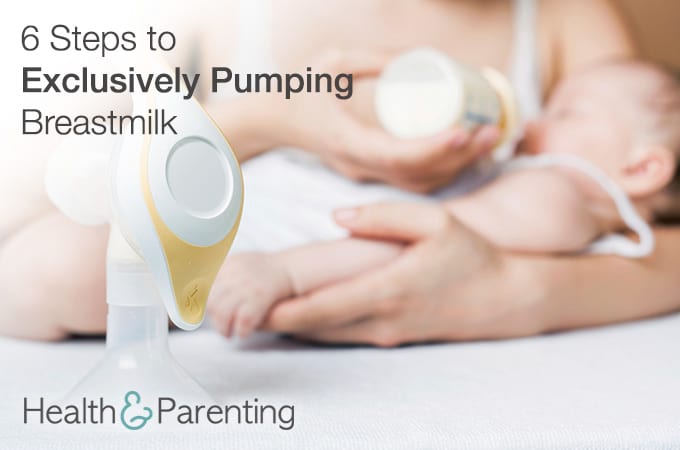For whatever reason, you’ve decided to pump your breastmilk and provide this to your baby by bottle. But what can you do to ensure you’re on the right path to provide the most milk for your baby?
1. Choose your pump wisely: When you’re pumping to provide all of your baby’s nutrition, you need something efficient. The most expensive pump on the market may not be the best choice. And not all electric pumps are created equal. So, do your research before buying or renting a pump to be sure it’s the best one for your individual needs.
2. Get to know your pump: Learn not only how to operate all of the pump’s settings, but also how your body reacts to pumping. Do you need to change the settings to take full advantage of your let-downs? Do you need to turn the pump off and massage your breasts? Don’t be afraid to make adjustments to your routine or to reassess the pump’s settings as time goes by.
3. Learn to let down: The biggest problem for many moms is relaxing enough for milk ejection. If you’re multitasking while pumping or impatiently watching the bottles willing them to fill faster, you may negatively impact your let-down. Consider putting on a sweater, making sure the room you’re in is warm enough, or placing a warm compress on your breasts before pumping. Try hands-on techniques like breast massage to maximize the amount you’re able to pump. Think about each of your senses and how you might use them to facilitate pumping (for example, hearing your baby cry or coo may trigger your hormones and your let-down).
4. Know how to maintain your supply: The amount of milk you can get each pumping session (and how often you need to pump to maintain the same output) will vary from woman to woman. Some research suggests that a total of 120 to 140 minutes of pumping each day is typical for exclusively pumping moms to maintain their supplies. How long you can go between pumping sessions, and how long each session should be, is trial and error.
5. If your output decreases, change things up: Experts say adding a few short pumping sessions may be more effective than adding minutes to your current pumping sessions. Check all of your pump parts – they do wear out occasionally. If you’re using a double electric pump, try pumping only one side, switching to a hand pump, or even manually expressing milk. Or change the time of day you pump. Anything to get out of the rut will help.
6. Find support: Common concerns for pumping moms include milk supply issues, plugged ducts, mastitis and sore nipples, to name just a few. Find professionals who are supportive of your feeding choice. And find other exclusively pumping moms – they will be the best source of ideas and encouragement.
While people may wonder why in the world you have chosen this path, others will understand that each woman does the best she can to give her baby a great start in life. Congratulations on giving your baby the many benefits breastmilk has to offer.
Are you pumping milk for your baby? What tips do you have?
Written by Michelle, Lamaze instructor, lactation consultant, and mother to 4 busy kids
This information is not intended to replace the advice of a trained medical doctor. Health & Parenting Ltd disclaims any liability for the decisions you make based on this information, which is provided to you on a general information basis only and not as a substitute for personalized medical advice. All contents copyright © Health & Parenting Ltd 2016. All rights reserved.










